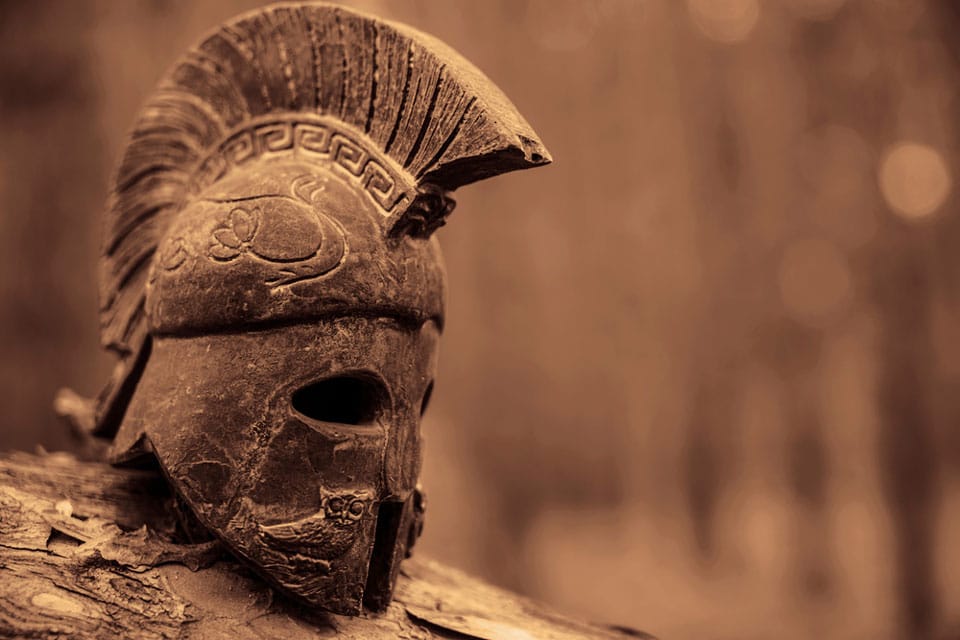Discover The Longest Wars Ever To Be Fought In History

Some previous battles made the United States’ longest war—19 years, 10 months, one week, and one day—seem short after the country completely withdrew from Afghanistan nearly two years later. While American wars in the recent past have been shorter than in the past, some wars in history have lasted centuries.
CEOWORLD magazine analyzed data and articles from multiple sources to list the longest wars in history. For a conflict to be included on this list, it must fit the definition of war, an open, typically proclaimed armed conflict between political entities like sovereign states or rival factions within the same state, like a civil war. The battle needed to last for a while and be meant to settle territorial or political issues.
- Iberian Religious War
> Duration: 711-1492 (781 years)
> Combatants: Spanish Empire and the Moors
> Killed: 7 million
> Fought in: Spain
Between the Catholic Spanish Empire and the Moors who lived in what is now Morocco and Algeria, the Iberian Religious War was the longest-running conflict in history. With a duration of 781 years, the “Reconquista” conflict lasted longer than the US has existed. The Moors fought Spain because it felt uneasy about non-Christians encroaching on their land when they crossed the Mediterranean Sea and claimed territory in Europe. Catholicism backed the battle even though it was not a component of the Crusades. Moorish dominance and sphere of influence declined in the 15th century. After regaining Grenada in 1492, the Spanish ended the Reconquista and established their authority in the area. - Persian-Roman Wars
> Duration: 92 B.C.-A.D. 629 (721 years)
> Combatants: Roman Republic/Empire and the Parthians and the Sassanids in Persia
> Killed: unknown
> Fought in: Modern-day Iran
The Parthian and Sassanid empires were two distinct Persian empires that were involved in the lengthy Persian-Roman Wars. Without making significant incursions into enemy territory, one side repeatedly conquered and retook border cities during most of the fight. A large portion of the harm was monetary. Due to their intense preparation for battle, both sides were left open to attack from outside parties. - Arauco War
> Duration: 1536-1825 (289 years)
> Combatants: The Araucanian Indians of Chile and the Spanish Empire
> Killed: unknown
> Fought in: Modern-day Chile, the southern part of South America
The Mapuche, Picunche, and Huilliche people of modern-day Chile were among the Araucanian groups that the Spanish attempted and failed to colonize for about 300 years. The Mapuche people withstood the Spanish conquistadors’ attempts to conquer most of South America, partly because of the Bio Bio River’s natural boundary. In 1825, Spain proclaimed peace with the Mapuche people and with Chile, leading to Chile’s independence. - Byzantine-Seljuq War
> Duration: 1048-1308 (260 years)
> Combatants: Byzantine Empire and the Seljuk Turks
> Killed: unknown
> Fought in: Asia Minor and Syria
The longest battle waged by the Byzantine Empire lasted more than two centuries, and it was with the Seljuk Turks. The Byzantines and Seljuks controlled and relinquished land in Asia Minor and its environs for 260 years. The Crusades cost the Seljuk Turks part of their newly acquired territory, but the Byzantine Empire was unable to hold onto its territory due to overstretching. After 260 years, the conflict concluded, hastening the Byzantine Empire’s decline. - Byzantine-Ottoman War
> Duration: 1265-1479 (214 years)
> Combatants: Byzantine Empire and the Ottoman Empire
> Killed: unknown
> Fought in: Modern-day Turkey, western Asia Minor
The European Middle Ages came to an end with the Byzantine Empire during the Byzantine-Ottoman Wars. Throughout the thirteenth, fourteenth, and fifteenth centuries, the Ottoman Empire expanded while the area under Byzantine rule contracted. When Mehmed II of the Ottoman Empire took control of the heavily defended city of Constantinople, he struck the Byzantines with a devastating blow. - Hundred Years’ War
> Duration: 1337-1453 (116 years)
> Combatants: House of Plantagenet (or House of Anjou) of England and House of Valois of France
> Killed: 3.5 million
> Fought in: Modern-day France
In actuality, the Hundred Years’ War lasted more than a century to decide who would rule what is now France. Following the death of Charles IV, the House Valois, descended from previous French monarchs, and the House Plantagenet, rulers of England, fought for 116 years for possession of the French crown. As the royal families of Europe intermarried, title claims became more nuanced. The conflict was fought sporadically between the incoming rulers. In addition to their conflict with one another, both parties had to contend with internal conflicts. Charles VII of House Valois took use of the opportunity provided by England’s Wars of the Roses to ultimately prevail in the conflict. - Seleucid-Parthia War
> Duration: 238 B.C.-129 B.C. (109 years)
> Combatants: Seleucid Empire of Persia and the state of Parthia
> Killed: unknown
> Fought in: Mesopotamia, modern-day Iran, Central Asia
The Seleucid Empire, which stretched from Thrace in Europe to the border of India, was beset with numerous internal and external conflicts that gradually reduced its strength, much like many other ancient empires. After a brief period, the empire regained control over Parthia (present-day Iran) through a series of conflicts against the Arsacids, who had seized Parthia in 235 B.C. However, that was just one of the many conflicts the empire faced at the time. The Seleucid Empire suffered its ultimate blow when the Arsacids, led by Mithridates I, seized control of almost all of its lands including the entirety of Mesopotamia. - Dutch War for Independence
> Duration: 1568-1648 (80 years)
> Combatants: Seventeen Provinces in the Netherlands against the Spanish King
> Killed: 100,000+
> Fought in: The Low Countries
The 80 Years War, often called the Dutch War for Independence, represented the end of Spanish dominance in the area and the growth of Protestantism throughout Europe. William of Orange launched an uprising against their Catholic overlords after years of Spanish tyranny among the predominately protestant Dutch people. Even though Spain’s force was larger, it was distracted by its conflicts with France and England, which allowed the Dutch to pull off significant surprise wins. The Netherlands sided with France in the 1630s. The two allies advanced into areas that were under Spanish authority. Spanish officials signed a truce in 1648 after seeing the combined power of the Dutch and French soldiers. - Karen Conflict
> Duration: 1949-present (74 years)
> Combatants: Karen National Union and the Burmese Tatmadaw
> Killed: unknown
> Fought in: Myanmar
No formal peace treaty was ever signed between North and South Korea, therefore the two nations are still formally at war even though the U.S. military is no longer engaged in an active armed battle on the Korean Peninsula. Tension between North and South Korea remains high, with no end in sight, despite recent indications of potential improved relations following their leaders’ meeting in 2018. - Korean War
> Duration: 1950-present (73 years)
> Combatants: North Korea, South Korea, China, United States, NATO
> Killed: 1.2 million
> Fought in: Korean peninsula
North and South Korea have never formally signed a peace treaty, so even though the U.S. military is no longer engaged in combat on the Korean Peninsula, the two nations are still technically at war. Even while there have been indications recently that relations may be improving—the heads of state of South and North Korea met in 2018—tensions between the two nations remain high and show no signs of abating. - Greco-Persian Wars
> Duration: 499 B.C.-449 B.C. (50 years)
> Combatants: Greek city states and Persian Empire
> Killed: unknown
> Fought in: Greece, Asia Minor
One of the deadliest and longest-lasting battles in ancient history began as a result of a Greek city state rebellion against Persia. The attack was easily repulsed by the Persians, but Darius, the Persian leader, took advantage of the fact that Athens had dispatched ships to help the uprising, to attack the entirety of Greece. The Greeks outwitted and outmaneuvered the Persian army on land and at sea, despite their numerical superiority. Following fifty years of warfare, Persia accepted a peace deal after the Greeks repulsed successive waves of Persian soldiers. - Papua Conflict
> Duration: 1969-present (54 years)
> Combatants: Free Papua Movement and Indonesia
> Killed: 150,000
> Fought in: western New Guinea
West Papuans created the Free Papua Movement, which has waged a civil war for independence since the Netherlands departed the region in the 1960s and gave Indonesia control over it. The movement claimed responsibility for an incident that killed 31 persons in December 2018. Although the Free Papua Movement says it targeted Indonesian soldiers, construction workers are said to have died, according to Indonesian authorities. - Punic Wars
> Duration: 264-146 B.C. (43 years)
> Combatants: Roman Republic and Carthage
> Killed: 250,000
> Fought in: Areas around Mediterranean Seas
Similar to the First World War, smaller groups engaged in combat before major allies like Rome and Carthage entered the fray, leading to an increase in intensity. Control of the formerly divided island of Sicily was at stake in the conflict. Despite having superior resources and military experience, Carthage’s leaders were largely dishonest and misappropriated military funds. Mercenaries were paid nothing, and Rome managed to overcome the formidable Carthaginian navy. After Carthage was ultimately vanquished by Rome, the city-state was destroyed and Rome emerged as one of the world’s most potent powers. - Guatemalan Civil War
> Duration: 1960-1996 (36 years)
> Combatants: Guatemalan rebels against the Guatemalan government
> Killed: 200,000
> Fought in: Guatemala
The Guatemalan Civil War started six years after the democratically elected leader of the nation was overthrown by a coup supported by the United States. Attacks by guerrilla forces on government forces sparked a 36-year battle characterized by bloodshed, kidnappings, torture, and executions, especially against the nation’s Mayans. Even though there were many coups and elections in Guatemala, the conflict continued until 1996, when Alvaro Arzu brokered a peace agreement. - Wars of the Roses
> Duration: 1455-1487 (32 years)
> Combatants: England’s royal houses House of Lancaster and House of York
> Killed: 100,000
> Fought in: England
Families Lancaster and York battled for the British crown during the Wars of the Roses because Henry VI of the House of Lancaster was mentally ill and unable to rule. Since they shared a common ancestor, both families believed they should be on the throne. Richard III of York was assassinated after decades of conflict, and Henry VII of the Lancasters was crowned king. Soon after, he wed a York, bringing the houses together and putting an end to the conflict. Much of the novel series “A Song of Ice and Fire” by George R.R. Martin, which later became HBO’s popular series “Game of Thrones,” was inspired by this war. In the novels, the names Lannister and Stark were derived from the names of the rival families, York and Lancaster. - Aceh War
> Duration: 1873-1904 (31 years)
> Combatants: The Netherlands and Aceh
> Killed: 90,000
> Fought in: Indonesia
One of the longest-lasting battles against expanding colonialism was the Aceh War. The people of Aceh province rejected the Dutch administration, even after their sultan signed a peace treaty acknowledging Dutch sovereignty in the territory. The Dutch believed they had a claim to Sumatra, a vast Indonesian island. Dutch troops faced decades of guerilla warfare waged by Aceh warriors, but they were outmatched. In 1949, Aceh attained independence. - Thirty Years War
> Duration: 1618-1648 (30 years)
> Combatants: Protestant and Catholic German city-states, royal houses of Bourbon and Habsburg
> Killed: 8 million
> Fought in: Europe
The Thirty Years War, as it was aptly titled, lasted three decades and pitted Protestants against Catholics in 17th-century Europe. Roman subjects had been granted the freedom to practice their religion by a previous peace deal, but Emperor Ferdinand II of the Holy Roman Empire forced them to become Catholics. Nobility revolted in what are now the Czech Republic and Austria. Following thirty years of warfare, the parties signed the Peace of Westphalia treaty, which established formal borders between the combatant areas and shaped modern geopolitics. - The Peloponnesian War
> Duration: 431-404 B.C. (27 years)
> Combatants: Greek city-states
> Killed: 100,000+
> Fought in: Greece, western Turkey, southern Italy
Greek city-states engaged in combat during the Peloponnesian War; Sparta headed one side and Athens the other. Although they had agreed to a truce after having previously been at war, there was still a great deal of tension in their peace. When diplomatic attempts to settle a dispute failed and both parties refused to back down, fighting eventually broke out again. The two sides agreed on a second truce that lasted six years after ten years of fighting. Finally, in 405, with financial assistance from Persia, Sparta’s navy defeated Athens’. By establishing a blockade, Sparta forced the Athenians to submit by starving them to death. - Great Northern War
> Duration: 1700-1721 (21 years)
> Combatants: Russian Empire and allies; Swedish Empire
> Killed: 300,000
> Fought in: Denmark, Russia, and Nordic countries
Sweden dominated the Baltic region in the early eighteenth century. Sweden was attacked by an alliance consisting of three adjacent kingdoms: Denmark-Norway, Russia, and Saxony-Poland. As soon as King Charles XII, his 14-year-old son, was anointed following his death, they launched an attack. Realizing they had a chance to seize more territory and resources, England and Prussia also joined the Russian coalition as the conflict raged. Sweden eventually gave up and gave up most of its wealth and territory to its adversaries after more than 20 years of fighting. In addition to diminishing Sweden’s standing internationally, this incident contributed to Russia becoming the global power that it is today.
Have you read?
Scorecard: These are the world’s top manufacturing countries, 2023.
Ranked: These Are The countries With The Highest Inflation Rate.
Ranked: 20 of the world’s youngest billionaires in 2023.
Countries and Territories Without Standing Military Forces.
Countries that need nurses and midwives the most, 2023.
Bring the best of the CEOWORLD magazine's global journalism to audiences in the United States and around the world. - Add CEOWORLD magazine to your Google News feed.
Follow CEOWORLD magazine headlines on: Google News, LinkedIn, Twitter, and Facebook.
Copyright 2025 The CEOWORLD magazine. All rights reserved. This material (and any extract from it) must not be copied, redistributed or placed on any website, without CEOWORLD magazine' prior written consent. For media queries, please contact: info@ceoworld.biz








